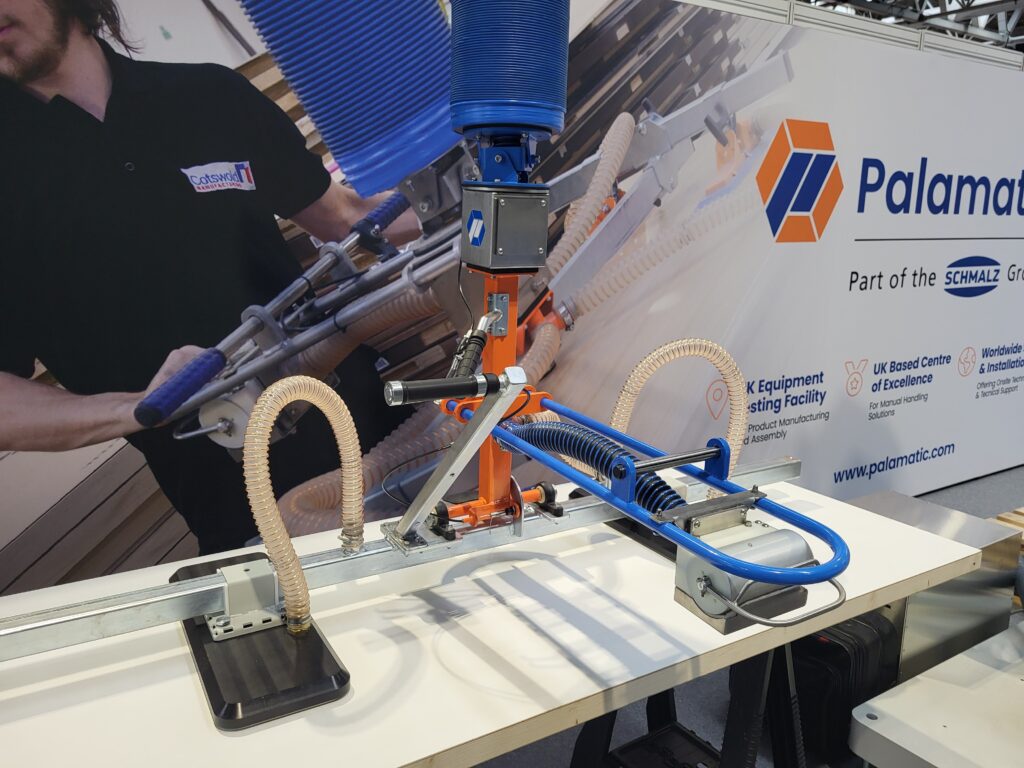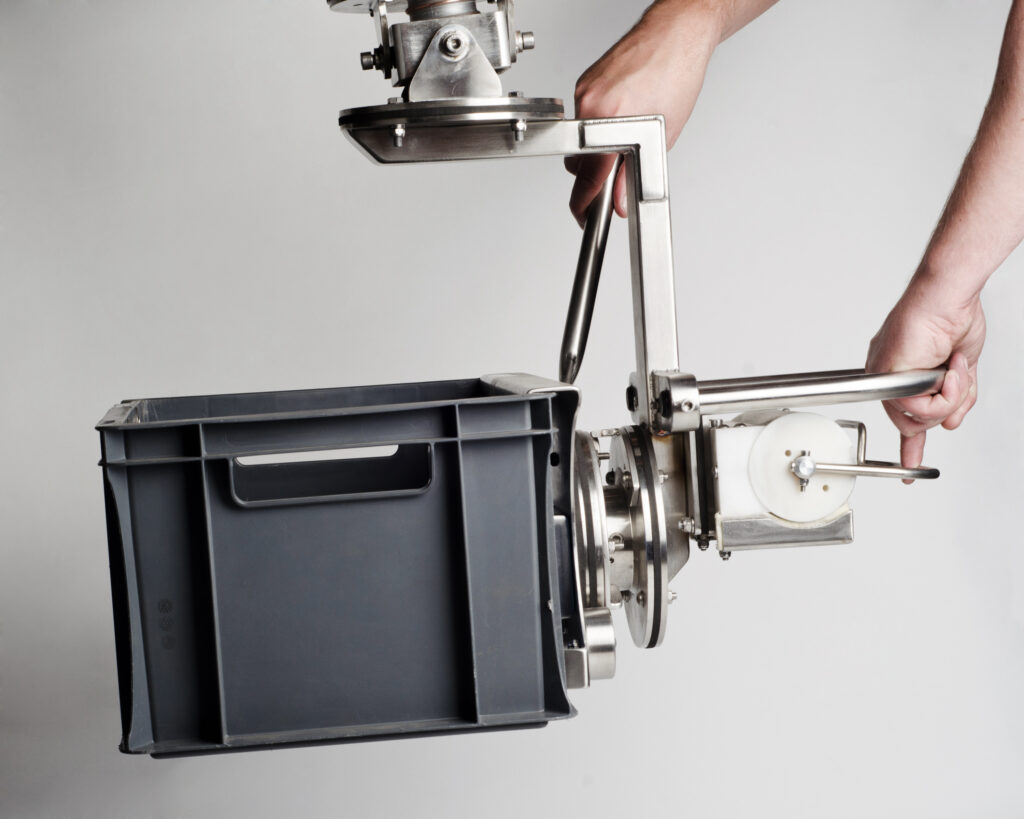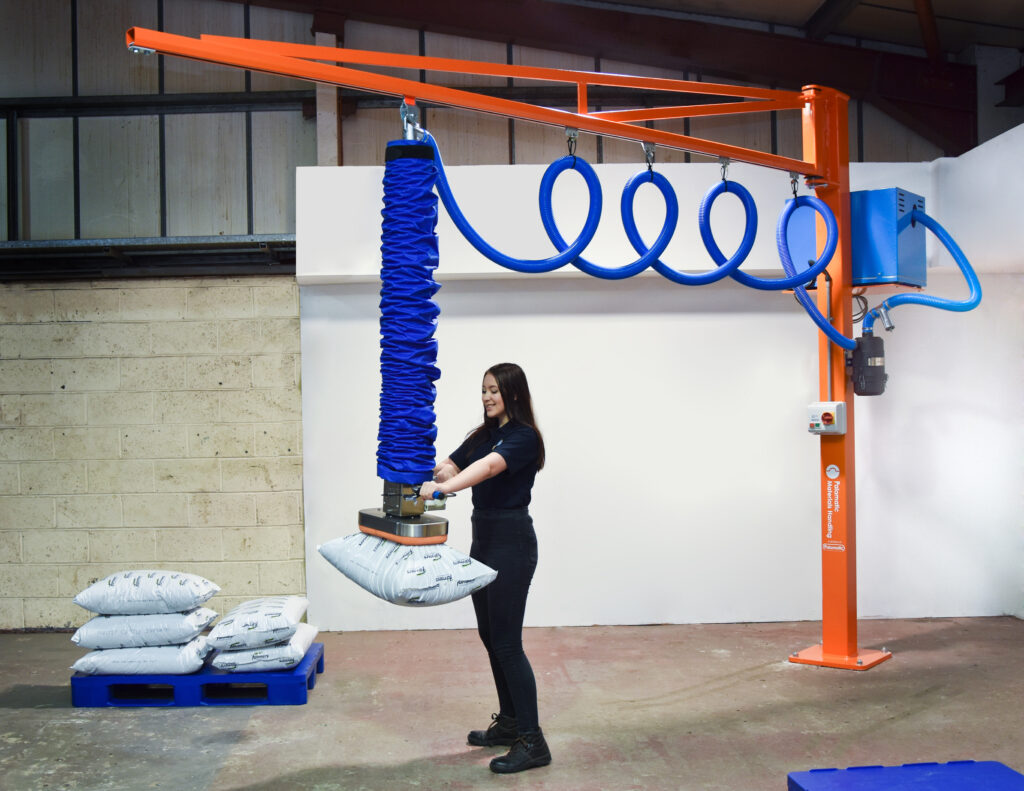Vacuum Lifters are indispensable tools in various industrial settings, offering an efficient, safe, and ergonomic solution for handling a wide range of materials. From sacks and panels to glass and barrels, these innovative devices significantly streamline the material handling process, increase productivity, and reduce the risk of injury. But how does a Vacuum Lifter work?
What is a Vacuum Lifter?
A Vacuum Lifter is a material handling device used to lift and move objects using the power of vacuum suction. It operates by creating a vacuum between the device and the object to be lifted, which forms a strong grip on the object’s surface. Vacuum Lifters are widely used in various industries for handling materials that are flat, smooth, or non-porous, such as glass, metal sheets, plastic, and stone slabs.

The Basics of Vacuum Lifting
At its core, a Vacuum Lifter operates on a simple principle: creating a vacuum to generate suction. This suction enables the lifter to securely attach to and manipulate objects without the need for manual handling. The primary components of a Vacuum Lifter include:
Vacuum Pump
At the heart of the system, the vacuum pump creates the necessary vacuum by removing air from the system.
Suction Pad or End Effector
Attached to the vacuum pump, this component comes into direct contact with the object to be lifted. The end effector must be appropriately sized and shaped for the specific material to ensure a secure grip.
Control System
This allows the operator to manage the vacuum level and the lifting process, ensuring precise control and safe operation.
Lifting Mechanism
The mechanism, often supported by a crane or jib system, provides the physical lifting force once the vacuum is engaged.

Vacuum Lifter Operating Process
Positioning the Lifter
The operator positions the suction pad or gripping device over the object to be lifted. For optimal performance, the surface of the object should be smooth and relatively non-porous, allowing the suction pad to create an airtight seal.
Creating the Vacuum
Once in place, the vacuum pump is activated. The pump removes air from the suction pad or end effector, creating a low-pressure area. This pressure difference between the inside of the pad and the surrounding atmosphere generates a strong suction force, securely attaching the pad to the object.
Lifting the Object
With the object firmly attached, the lifting mechanism is engaged. This could involve a crane system, swing jib, or gantry, depending on the application and workspace. The object is lifted with minimal physical effort from the operator, reducing the risk of injury and enhancing efficiency.
Releasing the Object
To release the object, the operator simply reverses the vacuum process, allowing air to re-enter the suction pad. This action neutralises the vacuum, causing the suction force to dissipate and the object to detach safely and smoothly.
Features and Benefits of Vacuum Lifters
Modern Vacuum Lifters, like those designed by us at Palamatic, incorporate advanced features that enhance their versatility and usability:
ATEX and GMP Compliance
Ensuring safety in hazardous and sensitive environments.
FDA Compliant Materials
For applications in food processing and pharmaceuticals.
Customisable Solutions
Adaptable to various industries, including biotech, life sciences, cosmetics, and more.
Ergonomic Design
Reducing operator fatigue and improving overall workplace safety.
Low Maintenance
Designed for reliability and ease of upkeep, minimising downtime and operational costs.

Vacuum Lifter Applications Across Industries
Vacuum Lifters are utilised in a myriad of industrial applications due to their versatility. Common uses include:
Barrel and Keg Lifting
Handle barrels and kegs safely and securely.
Reel and Roll Lifting
Efficiently handling large rolls of material.
Glass Handling
Safely lifting and placing glass panes without causing damage.
Sack Lifting and Bag Splitting
Streamlining the handling of bulk materials in warehouses and production lines.
Boards, Panels, Doors and Sheet Lifting
Facilitating the manipulation of large, flat materials like sheets, boards, panels and more.
Logistics, Distribution and Packing
Lifting and inspection of wooden pallets, tote trays, cardboard boxes etc.

Contact Palamatic for Ergonomic Vacuum Lifting Solutions
By leveraging the principles of vacuum suction, Vacuum Lifters help to transform material handling processes across industries, enhancing safety, efficiency, and productivity. Whether in food processing, pharmaceuticals, or general manufacturing, Vacuum Lifters are a critical asset, ensuring smooth and secure operations.
If you’re looking to optimise your material handling processes, get in touch with our experts at Palamatic today.
